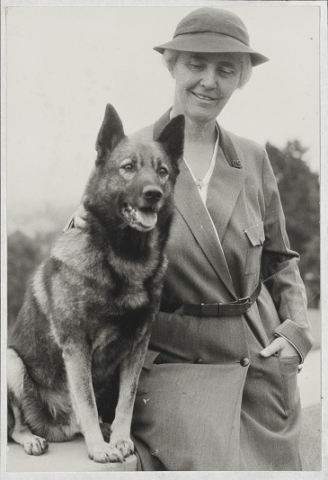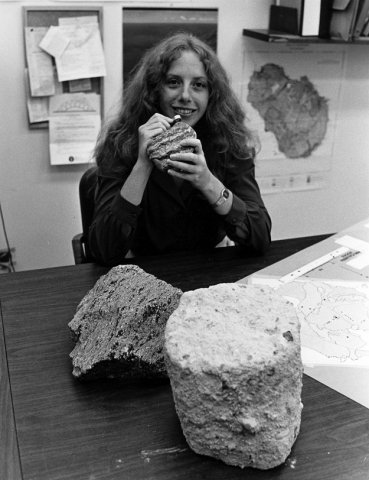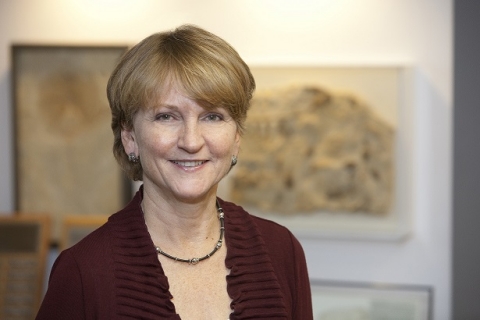Blogroll
Women have been involved in the School of Earth, Energy and Environmental Sciences from the early days of the university. In the beginning a few intrepid women navigated their way through an environment not designed for them. They were not allowed in the field with the men and were sometimes treated poorly as they competed for lucrative jobs with their male counterparts. Over the years, these women pioneers became part of the faculty, department chairs, and finally the Dean. The population of women in the School has grown to where they are now 61% of the undergraduate population and 42% of the graduate students.
As part of the 100 days to 100 years: Branner Earth Sciences Library Celebration, we celebrate these pioneering women who were trailblazers, who literally and figuratively broke new ground in the field. You may see items related to each of these women on display in the Branner Library exhibit case on the 2nd floor of the Mitchell Earth Sciences Building.
- Lou Henry Hoover (B.A. Geology, 1898): the first woman to major in geology at Stanford.
- Mary Balch Kennedy (B.A. Geology, 1929): an early student in the geology program.
- Dr. A. Myra Keen (B.A., Ph.D. Psychology, 1934): the first woman faculty member and a professor of paleontology.
- Dr. Gail Mahood (A.B., M.A., Ph.D. Geology, 1980): the first woman to be named department chair in the School.
- Dr. Elizabeth Miller (B.A., M.A., Ph.D. Geology and Geophysics, 1977): the first woman run the Stanford Geological Survey.
- Dr. Pamela Matson (B.S., M.S., Ph.D. Forest Ecology, 1983): the first woman to be named Dean of the School.
Lou Henry Hoover
 |
In 1893, Lou Henry was a 19 year old student at San Jose Normal School. She was a young woman who spent her time outdoors fishing, riding horses, and hiking. She listened intently when John Caspar Branner came to speak to her class. She talked to him afterward and asked, "Do you think a woman could study geology at Stanford?" He encouraged her to apply and in 1894 she became the first woman geology major at the university. |
|
She met her husband and fellow geology student Herbert Hoover, future President of the United States, through Dr. Branner. They were married on February 10, 1899 and sailed for China the next day as Hoover was the manager of the Chinese Engineering and Mining Company. While in north Burma, they worked together on the translation of De Re Metallica by Georg Agricola, published in 1912. |
|
Mary Balch Kennedy
| Mary Balch Kennedy came to Stanford as a junior after completing her first two years of college at Mills. She was a tomboy and spent time in her childhood with her father who leased quicksilver mines trying to turn a profit by rehabilitating them. Mary was not allowed to attend the required Summer Geology Camp with the twenty men as it was considered too dangerous. Instead, she lived at home in Los Gatos and mapped the geology of the New Almaden Quadrangle under the direction of Chief Tolman. She notes, “There were lots of rattlesnakes and I was very scared of them.” She said it was rugged country and falling was a serious hazard. “I was probably in more danger, though, than if I had been in camp and had a partner!” After graduation in 1929 she spent many years working with geologists including three years at the US Coast and Geodetic Survey before leaving to start a family. |
A. Myra Keen
 |
Myra Keen was called "the First Lady of Malacology." Myra was born in 1905 in Colorado Springs, Colorado. She graduated with her Bachelor's degree from Colorado College and received a PhD. in Psychology in 1934. She was unable to find a job upon graduation and spent her time collecting shells. Through a connection at the Hopkins Marine Station, she was introduced to Mrs. Ida Oldroyd, curator of Stanford's shell collection. She audited courses with Professor Hubert Schenck and eventually became the curator of modern shells. |
| During WWII, she started teaching paleontology and for a time she and Eliot Blackwelder taught geology in the School. In 1954 she was appointed Assistant Professor of Paleontology and promoted to full professor in 1965. The shell collection was placed on permanent loan to the California Academy of Sciences shortly following her retirement. It contained approximately a million cataloged specimens, one of the largest in the country. She published 9 books and 75 articles. | |
Gail Mahood
 |
Gail Mahood was born in Oakland, California and received all of her degrees in Geology from the University of California, Berkeley. She joined the faculty of Stanford University in 1979. Gail became the first woman to chair the Department of Geological and Environmental Sciences in 1996. She was the first woman from the School to be named the Chair of the Faculty Senate. |
| Her research includes seminal papers on igneous processes with publications including Science. She was the founding editor of Proceedings in Volcanology, the executive editor for the Bulletin of Volcanology, and an associate editor for the Geological Society of America Bulletin. As she states, "I am interested in understanding the processes that assemble and occur in the bodies of silicic magma that give rise to huge, explosive eruptions that spread ash continent-wide." She is active in field research taking students to Death Valley and the eastern Sierra Nevada. | |
Elizabeth Miller
 |
|
Elizabeth Miller joined the Stanford faculty in 1979, the same year as Gail Mahood. Elizabeth received her Bachelor's degree in geology and her Master's degree and Ph.D. in geology and geophysics from Rice University. That year she took over the summer field geology course. The work of the Stanford Geological Survey officially started in 1902-03 and was taught by John Caspar Branner and John Flesher Newsom. Women were not allowed to attend the camp until 1964 when Cynthia Avery, Rosalind Tuthill, and Judy Terry spent the summer in Pine Mountain and Topaz Lake. Elizabeth led the Survey for 9 years taking the students to do mapping and research in Nevada - the Independence Mountains, the Snake Range, the East Pine Nut Mountains - and the Kern Mountains in Utah. Bob Compton stated that she was "the best instructor of all. She's so intense and supportive. She's made the teaching of field geology an art." Dr. Miller and her students study the basic knowledge of deformation at the lithospheric scale. |
Pamela Matson
|
Pamela Matson joined the Stanford faculty in 1997 and became Dean of the School of Earth Sciences in October 2002. She has degrees in biology and environmental science and received her Ph.D. from Oregon State University in Forest Ecology. In 1995 she was awarded a MacArthur Fellowship for her work "in the role of land-use change on global warming through analyzing the effects of greenhouse gas emissions resulting from tropical deforestation." Upon being named Dean, Provost Etchemendy stated, "She is a renowned researcher and teacher and has shown a real gift for leadership as the director of the Earth Systems Program." In 2012, Dr. Matson edited and co-wrote many chapters in the book Seeds of sustainability: lessons from the birthplace of the Green Revolution. |
This exhibit is part of the anniversary celebration commemorating the 100th year since the founding of the Branner Earth Sciences Library & Map Collections (June 14, 1915 - June 15, 2015.)
Counting down to the anniversary on June 14, each week we will be exhibiting items from our collection and archive. This exhibition is part of an ongoing series of anniversary events that culminate with a public celebration, speakers, and tour of the library on Thursday, June 11, 2015 from 4-6:30pm. Please be sure to join us.



 Stanford University Home
Stanford University Home